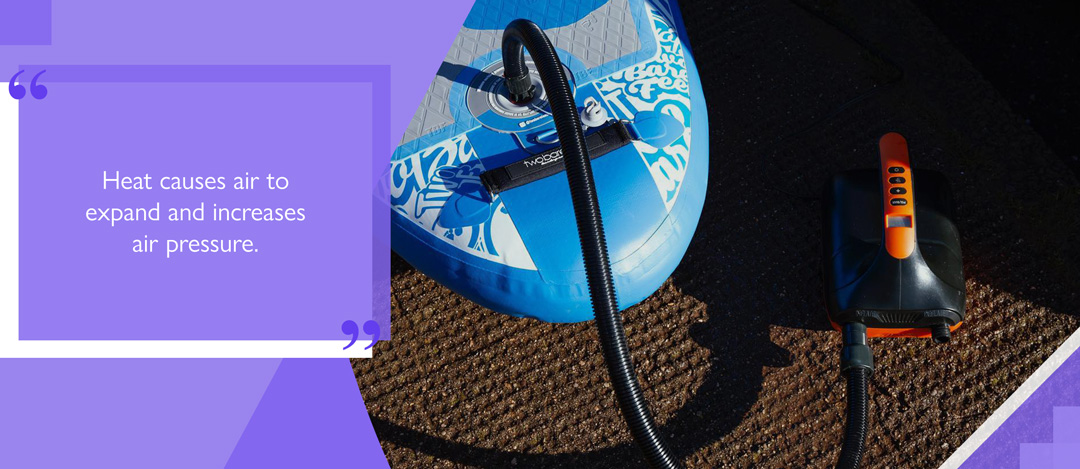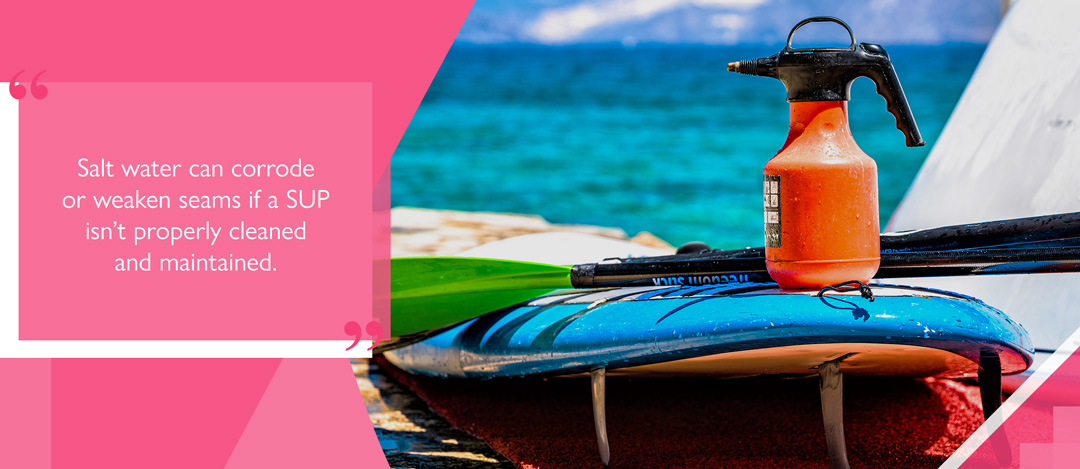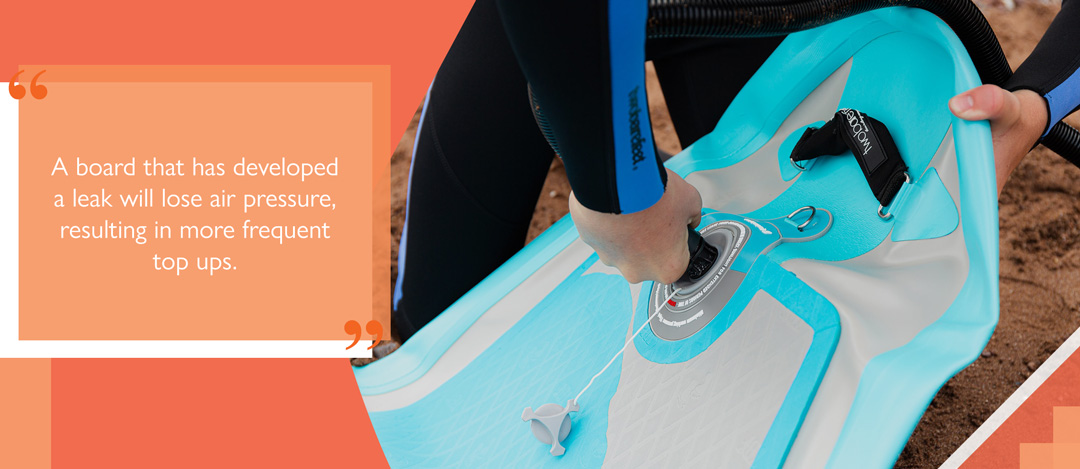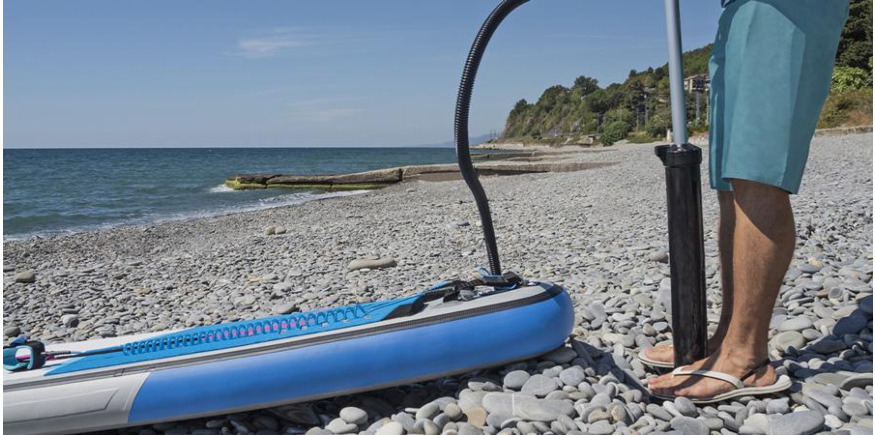An iSUP’s air retention will depend on how you intend to store the board, how and where it’s used, ambient conditions, and construction materials and techniques.
Storing an inflatable SUP
Whether inflated or deflated, ensure your board is dry before putting it in storage. Microbes and mould breed in damp conditions and can damage or weaken the board’s seams over time. This will encourage air to escape, leading to a need for additional inflation.
Salt water can also corrode or weaken seams and materials if a SUP isn’t properly cleaned and maintained after use.
It’s fine to leave a SUP inflated for short periods in storage. However, releasing some air pressure before stowing will help reduce any straining that may occur. Deflating fully every so often will allow the materials to ‘rest’.

Weather conditions can affect inflatable paddle board air pressure
On a hot day, heat will cause air to expand and increase in pressure. This makes it more likely air will need to be released from a board when inflated to its maximum PSI rating, especially when transporting the board on a roof rack, leaving it to sit on the shore, or even while out on the water.
The opposite is essentially true on a cold day or in cold water. Gaseous air molecules will lose energy, which will cause volume to contract and pressure to drop. This may lead to a board needing additional inflation after it has been sat on the water for a while.
Consider what you are using your iSUP for
Putting an inflatable SUP through its paces or submerging it in water is more likely to displace air within the board or lead to a need for a top up. Activities like SUP surfing, which demand precision and responsiveness from a paddleboard, will be directly impacted by board rigidity.
Even though leisurely touring demands less from a SUP in terms of responsiveness, a rigid board is still necessary. Provided the board is not underinflated, you should receive the performance you would expect.

Inflatable paddleboard construction
The best boards rely on good quality materials and manufacturing to ensure longevity. Poor quality boards will be more likely to leak or lose tensile strength over time, meaning more frequent pumping up to maintain rigidity and avoid bowing.
Design choices, like using DWF for outer layers instead of glue, will guarantee structural integrity and reduce the likelihood of leaks.
In the event of damage to an iSUP
Boards that have developed tiny cracks or leaks will obviously lose air pressure, requiring more frequent top ups.
As air under pressure can exert a lot of force on a small hole, potentially making it larger over time, it is important to locate leaks before they develop into a serious problem. This can be achieved by adding mild, marine-safe soap to the seams and watching for where small bubbles form.
If an inflatable SUP does need repair due to a puncture, the good news is that a quality patch should last a long time. Repairs on areas of the board more often submerged or likely to encounter obstructions may wear down faster than those topside.

Reliable and rigid inflatable paddleboards
At Two Bare Feet, all our inflatable paddle boards are constructed to provide a solid build that lasts. Designed to inflate to a maximum PSI rating of 18, we know our high-grade iSUPs will withstand whatever is thrown at them, time and again.
If you’re going to be transporting your board while deflated, reducing air pressure for reasons of safety, or anticipate having to top up at the shore, before launching, it also makes sense to pick up one of our reliable dual-action SUP pumps. They’ll get you going quickly, any time you’re ready to go out and enjoy time on the water.




